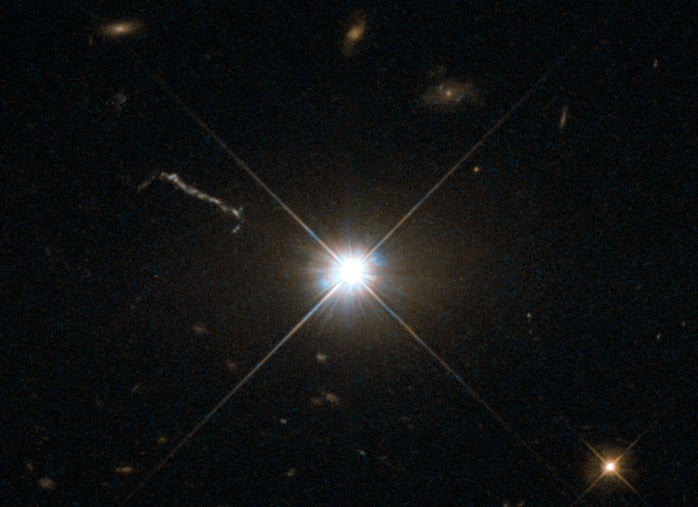
Observing 3C 273 is a lot like observing Pluto. In both cases, you’ll only see a faint point of light, but the observations are meaningful because of what the objects are. In the case of 3C 273, you’re looking at the first quasar ever discovered, receiving photons emitted a couple of billion years ago from the maw of a supermassive black hole. You can find it 31/2° northeast of Zaniah (Eta [η] Virginis). It’s also the brightest quasar in the sky, glowing softly at magnitude 12.9.
But that’s just its apparent magnitude. Because it lies some 2.4 billion light-years away, its absolute magnitude (the brightness it would have if seen from a distance of 32.6 light-years) is –26.7, the same as the Sun’s apparent brightness. A bit of math, then, shows that 3C 273 is 4 trillion times as bright as the Sun.
The designation 3C 273 comes from the fact that it was the 273rd object cataloged in the Third Cambridge Catalogue of Radio Sources, which was published in 1959. The quasar lies at the center of a giant elliptical galaxy, which has a mass estimated at 200 billion times that of the Sun. And while amateurs using large scopes have a chance to spot 3C 273, there’s no hope of seeing the galaxy, which, at magnitude 16, is a lot fainter.
This object is an example of an active galactic nucleus. At the center of such objects, a supermassive black hole accelerates gas and dust to speeds near that of light before they disappear to become part of the black hole. 3C 273’s supermassive black hole is some 900 million times as massive as the Sun. The process of accretion also produces a jet of tremendous energy. This quasar’s jet is approximately 200,000 light-years long. On images taken through large telescopes, its angular size is 23″









